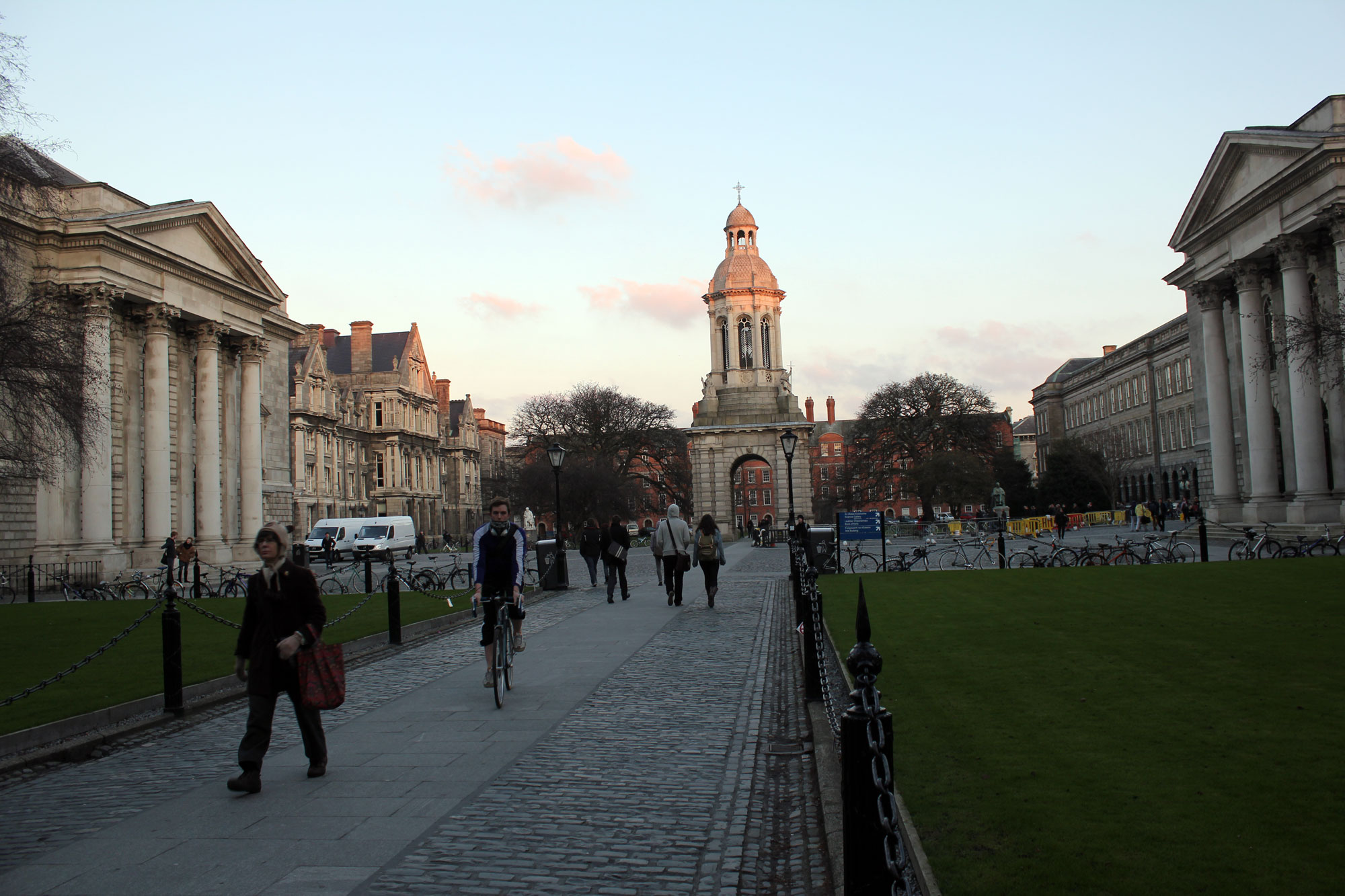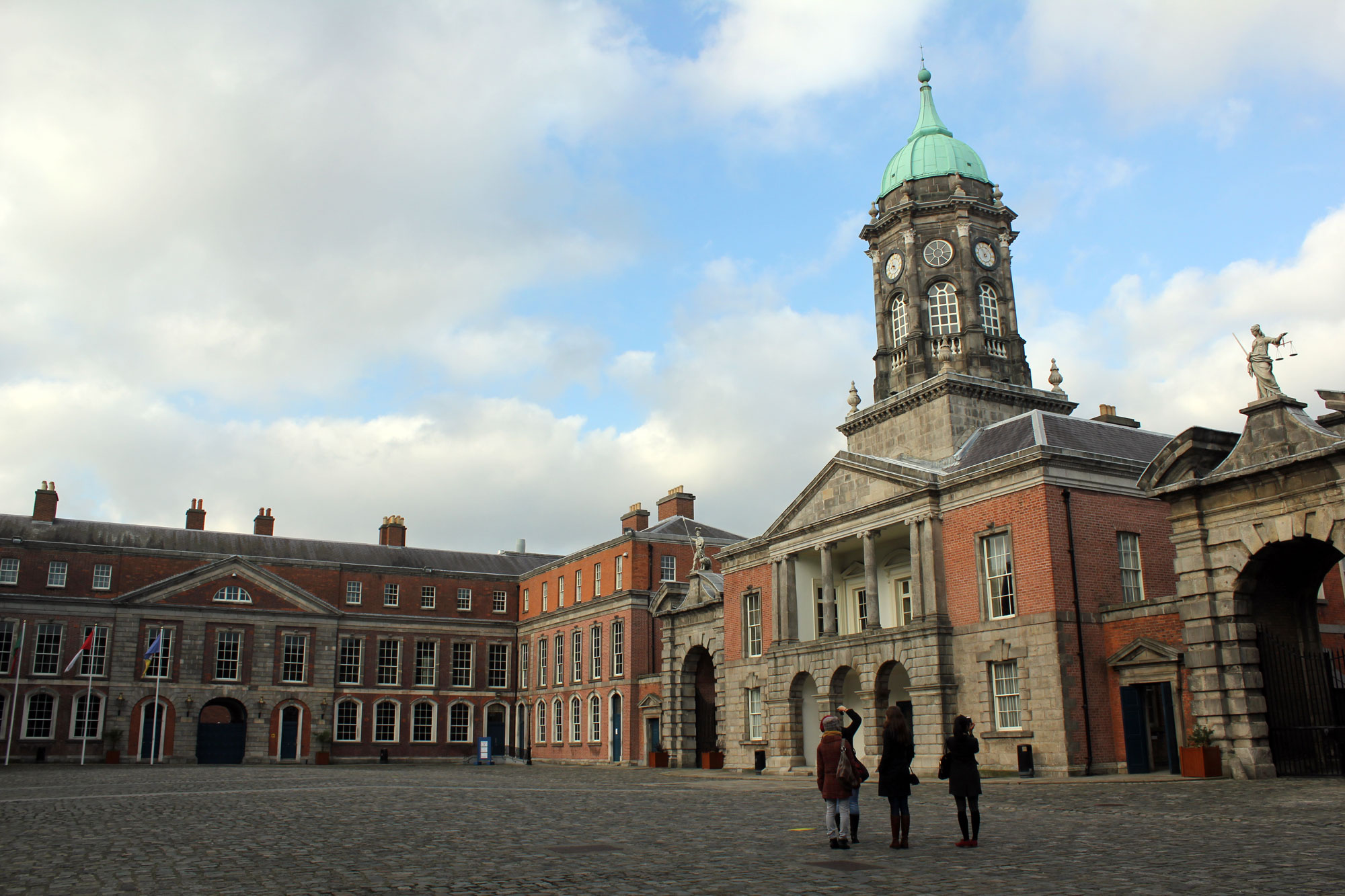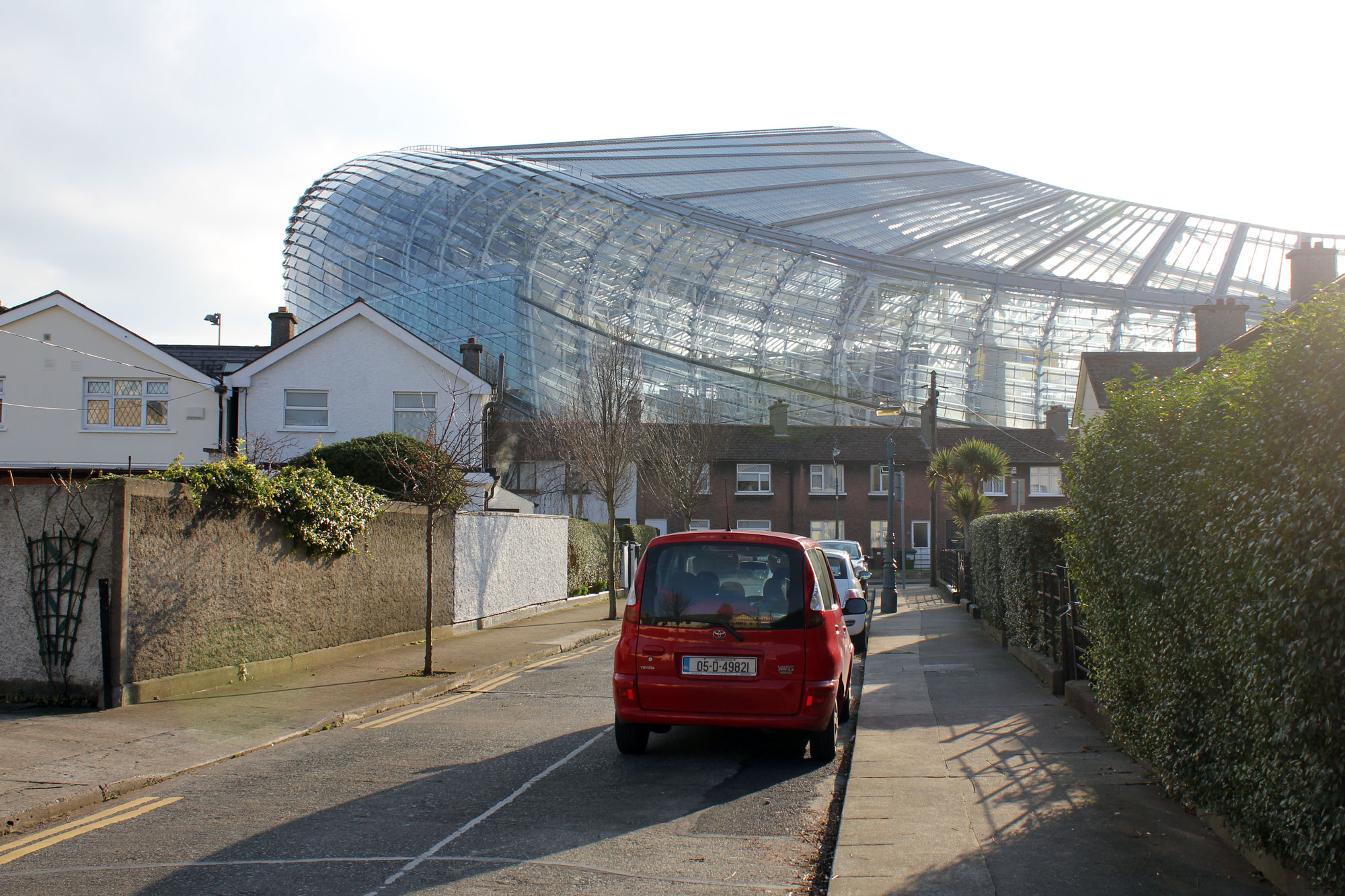Neatly divided by the Liffey River, the capital city of the Republic of Ireland has had a recurrent history of both opulence and hardship. Originally established as a Viking settlement in the 9th century, the British crown would claim sovereignty over the area following a Norman invasion centuries later, establishing the major defensive work of Dublin Castle as the center of English power for 700 years. Dublin would immediately prosper under new English control as a major trade area and become center of administrative rule in Ireland, leading to such prominent establishments as Trinity College, Ireland's oldest university. By the 17th and 18th centuries, Dublin had grown to the second largest city in the British Empire (5th in Europe) and during this period is when a vast majority of the city's most notable architecture and famous urban districts were developed. However, by the time of the Industrial Revolution, Dublin was seen to play no part in the historical movement, due to the passage of the Act of Union in 1800 that would transfer the city's seat of government to Westminster Parliament in London, leading to a period of economic and political decline. The Great Famine in the 1840s would make things worse, leading to a million deaths and over a million more emigrated to escape it, with over half of all immigrants to the United States from Ireland. The population of Ireland would not recover from that period, never returning to its 1840s level (8.2 million) since. The 20th century saw the rise of modern Irish nationalism and the 'Easter Rising' of 1916, which would led to an Irish Civil War resulting in significant amount of damage to Dublin's city center and the ascension of an independent Ireland.
Waterfront along the Liffey River
Dublin Infastructure
Trinity College campus
At first glance, modern Dublin can be characterized by its simplicity and informality, living off a Georgian Dublin aesthetic from the heyday of centuries past. Most buildings entail large proportions or grand spaces, but with little extraneous adornment, a much simpler model to the decadence of their European neighbors, which has much to do with the country's long run of economic constraints over simplistic design intentions. But what Dublin lacks in architectural ambitions, makes up for in civic vibrancy. Looking south of the River Liffey, you will find the bustling redeveloped district of Temple Bar, academic exuberance of Trinity College and, just below it, the pedestrianized shopping area of Grafton Street, leading to the city's St. Stephen's Green (the city center's largest park). Move north, over the river, along the major north-south traffic thoroughfare of O'Connell Street and you encounter an urban context that is more monumentalized and sterile, with numerous government institutions and high-end shopping centers. The most notable instance in the area is the Monument of Light, the tallest structure in Dublin, which denotes the intersection of two important streets: A major north-south traffic thoroughfare of O'Connell Street and the main pedestrian shopping area of Henry Street.
Dublin Castle
Aviva Stadium in Dublin's Ballsbridge area, designed by Populous (formerly HOK Sport)
In the 1990s and 2000s, fortunes for the island nation were about to turn from bleak to incredibly opportunistic, as suddenly the Irish were among the richest people in Europe with a booming economy. Politicians and property developers were anxious to take advantage of the positive economic landscape, adding much needed modernization to Dublin's architectural scene. Most of the focus was on the East side of Dublin, where high-profile projects such as the Dublin Docklands city quarter and the new Aviva Stadium were completed. Architectural historian Jean-Louis Cohen, writing in 2001 in the midst of economic prosperity, saw a tension between the booming Irish economy and the aspirations of architects who espoused critical regionalism in the late eighties and early nineties. He calls the approach of contemporary Irish architects “critical internationalism”. This approach allows for “research for a local specificity” while not precluding “a series of cross positions defining a common intellectual space. The increasingly international character of capital, clients, and uses in Ireland allows – perhaps forces – a direct connection to architectures happening throughout the world and in Europe especially." It had been decades since Dublin had seen this much construction and development. Now that Ireland went from an economic high to a disastrous low....again, the country can reflect on the impact of this new society and architecture, letting the projects mature and see if they can truey be expressive of 'an Irishness' in built form.
Calatrava's Samuel Beckett Bridge crossing the River Liffey in Dublin's Docklands area






